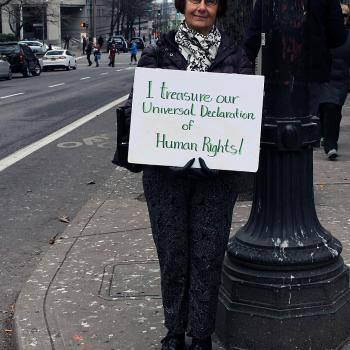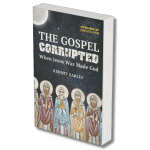During the period of 1830 to 1880, many women orators spoke in the Northern states on a variety of topics. Carla Peterson’s book, Doers of the Word, examines a sampling of these women from cultural and literary aspects. Peterson views her work as an addition to existing scholarly work that aims to recover themes and cultural trends that may have been overlooked. Her work, however, differs from other work in that it seeks to widen our understanding of black resistance movements by examining the contributions of women during this particular period. By connecting the dots of individual disciplines of literary criticism, history, anthropology, and others, Peterson creates a picture of resistance that is deeper and wider than most of us could ever imagine.
Peterson identifies herself as a feminist, and though she may approach her work from this perspective, her intensive scholarship in crafting this book should attract scholars from any of the above-mentioned individual disciplines. Doers of the Word is not a book for everyone; its author’s appreciation for accuracy and changing context makes for a difficult read. Peterson’s passion for her subject, however, compels the serious reader to persevere. Her scholarship rewards the reader with a broadened cultural understanding of these female activists, and her ability to see through the walls of single disciplines to show how they connect with others cautions us against oversimplifying the contributions of these women.
The first chapter of Doers of the Word should be required reading in college courses. In a few pages, Peterson’s work supplies enough information to crumble foundations of understanding in multiple disciplines. Her questions imply that our perceptions of this time period and the women who travelled around speaking on various topics are dangerously limited. She identifies a number of circles of examination to which one person could belong. This diversity of environment goes great lengths to dispel myths of geography, gender, vocation, and identity. After considering her descriptions, certain labels, which used to mean something, now seem inadequate and indeed inappropriate. We must find a new vocabulary with which to discuss the lives of these women. At a loss for common language, we simply must consider, as Peterson does, each woman individually. After such examination, we may be able to draw some informed conclusions about the cultural locations and contributions of these brave women activists.
From a literary perspective, Peterson observes difficulties which arose from the seemingly simple goal of desire to tell one’s own story. She says women authors and speakers found “the very act of authorship could at times separate black writers from their broader community, constituting them as a distinct class that sought to speak not only for itself but also for the subaltern, and thereby working to some extent against community cohesiveness” (13). Audience and sponsorship did not always agree, and the goals of sponsors were not always the same as those of the authors. While critics reduce the work of such authors and speakers by attempting to label it as an imitation of the dominant discourse, Peterson argues this use of style and language by African-American women served a purpose of subversion and illuminated a false authority claimed by the majority culture. The author also indicates these authors may also direct their writings to an “imagined community beyond their immediate readership, a community preoccupied with the central task of forging a political and cultural nationality” (14).
Peterson also deconstructs the image of black family life. Whereas in white families, we tend to focus on the nuclear family, African-American families extended to include non-related members of the community. Women speakers do not have one view of this definition of family. Some speakers spotlight the woman’s role in all aspects of the household while others use the demands of such an existence to point out the physical hardships such women endure. This broader definition of family makes for a larger network of support in the process of resistance. African-American women joined many social groups with various purposes, ranging from aid for the community to education for themselves. As they entered the workforce in domestic positions, they achieved some level of economic independence, but did so suffering in ways the white women did not. These and other situations show the difficulty in determining the public and private spheres of African-American women. On the surface, the family unit would seem to be private, but as it widens to include others in the community, it can become quite public. As women work in public places but encounter physical and mental abuse on an individual level, this public aspect can become quite private. Peterson takes the “seeming” and gives us concrete vantage points from which we may dispel the mirage. Whether or not we see an accurate picture underneath depends upon our commitment to uncover the truth from many angles.
Another problem for African-American women is the issue of identity. For people who surrender the idea of returning to their family’s nation of origin yet find themselves living within a national culture in which they do not find themselves represented, cultural identity is difficult to articulate. What will it look like for African-American women to live into an American identity? What words will they speak to an audience to help them envision their own identities as Americans? This location of self will be a struggle against the dominant culture’s perception, made all the more difficult if that perception happens to be the sponsor of said identity language.
As previously mentioned, African-American women organized into community societies for various purposes, however, only African-American men organized on a national level. Some of the women aligned themselves with elite men working on the national level and won their respect. Overall, however, Peterson suggests in “restricting the role of black women in the articulation of racial uplift programs, the black male leadership strove, in what it believed were the best interests of the community, to contain heterogeneity, silence difference, and gender blackness as male” (17). Peterson’s scholarship shows that the issue of identity becomes even more complex when race becomes a possession of males. She also discusses the physical ambiguities of African-American female identity. Images of promiscuity and sensuality layer atop images of brute physical strength of the manual laborer, creating a confusing image, to say the least. For African-American women, language is a means for articulating identity from a place of pain. The public act of speaking in front of a crowd leaves the speaker subject to observation from the audience. The words that must be spoken outweigh the risk of criticism based upon appearance.
Peterson explores many other themes in her first chapter, and while the individual studies add tremendous contribution to scholarship in the various fields of cultural studies, this first chapter is of utmost significance. With the curiosity of a scientist, Peterson shines the light of scholarship upon what once looked like concrete foundations and shows them to be nothing but air. She suggests African-American found the in-between spaces and spoke from them. Often this meant distancing themselves from family, friends, and support networks in order to deliver a message. From this lonely place, women found an
d appropriated many different ways to communicate these messages. Some used religious language to locate themselves within a Biblical context, some used language and style of white speakers, some used African folk stories, but all sought a way to position Self and Other before a public audience in a manner that would result in racial uplift and understanding.
The best-known orator in Peterson’s study, Sojourner Truth, was illiterate and somewhat of an outsider to the black community following emancipation from slavery. Peterson’s chapter attempts to deconstruct the mythic proportions of Truth’s identity to reveal a real person who experienced real events and whose motivations become accessible to us. Truth allowed two white women to write her biography, yet she was aware of a danger intrinsic to written texts. She believed God maintains a written record of human actions, yet human writings are subject to interpretations, which are not necessarily the intentions of their authors. She distrusted figurative language and symbols, and Peterson includes pictures of two sculptures thought to embody Truth. The two works of art are drastically different and require digging through multiple layers of interpretation to “see” Truth. As photography developed, Truth sold her image to white abolitionists. This image, whether or not it portrayed Truth as she preferred to appear, enabled Truth to do the work she desired, supporting causes of vital importance. Truth viewed herself as a “sign unto this nation,” and preferred to travel and speak about things happening now. Although illiterate, she collected autographs in her “Book of Life,” and Peterson suggests this activity had several levels of importance, one of which was a means of granting power to Truth as the collector.
Peterson combines her own research with the accounts of Truth’s biographers to show how the artistic representations, photographs, and biographic accounts create images that may not have been fair representations of the true person of Truth. After discussing deep issues of gender, appearance, and motivations, Peterson turns to an examination of Truth’s written speeches. For all of the earlier distaste of figurative language, Truth certainly displays a gift for using it in her speeches! Truth used African-American imagery from folk proverbs to make her points to both black and white audiences. Peterson suggests Truth’s speeches may give us a larger vision of the African-American culture. Many accounts of Truth’s speeches fail to understand her style and meaning. Peterson’s questions cause us to realize we know very little about Truth’s persona. Did she have an understanding of her rhetorical strategies and employ the use of a character Sojourner Truth in order to speak both to white audiences and beyond them to black communities? Peterson examines the multiple publications of Truth’s 1851 “A’n’t I a Woman” speech, and determines Gage’s account of the speech, written years after its occurrence, to be the construct of a white woman heavily influenced by outside factors. Peterson suggests Gage presents Truth as a “masculine body seeking feminization” (53). Truth claims citizenship in New York and bases it in her identity as a former slave, not as a woman. Her themes of conflict between race and gender, added to both clear and subconscious objectives of those who documented her work, underscore the need for careful scholarship as we attempt to reconstruct her life and work.
I offer a detailed overview of Peterson’s chapter on Sojourner Truth in order to show her in-depth research. Rather than stand upon the work of other scholars, Peterson stands outside of it and examines it from every angle. She presents not one portrait of truth (or Truth), but rather shows us how the reconstruction of Sojourner Truth results in differing personas depending upon the point of view, experience, and social agenda of the person describing her. The following chapters of Doers of the Word reveal this same commitment to scholarship.
In the third chapter, Peterson examines Maria Stewart and Jarena Lee. Contemporaries of Truth, they received little education and worked as part of the emerging class of black laborers. This chapter evaluates the spiritual dimension of these African-American women writers and speakers. Peterson examines the exclusion felt by Stewart and Lee primarily based upon their gender. The organizations to which these women sought to belong excluded them; despite the fact these organizations were part of the African-American social and religious community. Their appropriation of scripture to give voice to their own laments and hopes for liberation would meet resistance from Christian organizations and institutions. Stewart and Lee operated from the margins, seeking to voice their truths to those who would listen. Stewart portrayed herself as Jeremiah and focused on the indictment of her own people. She lifted up the power and action of African-American women. Lee sold her narrative in attempt to support herself financially and to give credibility to her religious experience and sense of call. Peterson explores the relationship between these women and their elite male mentors. For Stewart, David Walker gave her a model of the jeremiad, which she appropriated and made accessible in terms of personal activity. For Lee, Richard Allen opened some aspects of the AME Church to her, and although she was not accepted after his death, she used the experience in her narratives to legitimize her position as an evangelist. For both Stewart and Lee, their spiritual style of language was not always accessible to audiences, and Peterson views their lives as remaining in tension with their spiritual and physical location in the world.
 Peterson next delves into the “question of home” through the work of Nancy Prince and Mary Ann Shadd Cary. She examines the phrase “colored tourist” and its implications for African-American women. Peterson asks, “If African-Americans were indeed on tour, where then was home? Can home ever be specified for the African transplanted to American soil? Is the African-American not always already a ‘colored tourist’? Can he or she ever tour at leisure, or is the tour always in some sense an enforce one?” (89) Peterson asks many other probing questions in this chapter as she traces the travels of these women outside of the country. Exposure to other ways of living raised social concerns in both women, and they pursued writing and speaking as a means of raising awareness and deconstructing images of what it means to be a woman. Prince writes of her experience in Jamaica and infuses it with a subversive message, critical of colonization. She does not mention her objective of social aid until the end of the narrative. Shadd Cary sought to tear down ideas of race and gender. She employed a logic that assumed the negative connotations were associated with the language of race, so to present African- Americans in another light might liberate them from the negative circumstances in which they found themselves. In her attempts to change the view of women’s roles, she won a position in the National Convention of Colored Men after delivering a speech on emigration. Her critics saw her as too “manly” and not “feminine” enough. Her examination of the notion of home took her back and forth across the United States and Canada border. Displacement offered both Prince and Shadd Cary a point of view they shared with others through their speaking and
Peterson next delves into the “question of home” through the work of Nancy Prince and Mary Ann Shadd Cary. She examines the phrase “colored tourist” and its implications for African-American women. Peterson asks, “If African-Americans were indeed on tour, where then was home? Can home ever be specified for the African transplanted to American soil? Is the African-American not always already a ‘colored tourist’? Can he or she ever tour at leisure, or is the tour always in some sense an enforce one?” (89) Peterson asks many other probing questions in this chapter as she traces the travels of these women outside of the country. Exposure to other ways of living raised social concerns in both women, and they pursued writing and speaking as a means of raising awareness and deconstructing images of what it means to be a woman. Prince writes of her experience in Jamaica and infuses it with a subversive message, critical of colonization. She does not mention her objective of social aid until the end of the narrative. Shadd Cary sought to tear down ideas of race and gender. She employed a logic that assumed the negative connotations were associated with the language of race, so to present African- Americans in another light might liberate them from the negative circumstances in which they found themselves. In her attempts to change the view of women’s roles, she won a position in the National Convention of Colored Men after delivering a speech on emigration. Her critics saw her as too “manly” and not “feminine” enough. Her examination of the notion of home took her back and forth across the United States and Canada border. Displacement offered both Prince and Shadd Cary a point of view they shared with others through their speaking and
writing. Peterson offers an in-depth examination into the rhetoric of African emigration, noticing its location within the male arenas of discourse. Shadd Cary refused to endorse African emigration, but did advocate Canadian emigration and pursuit of an agrarian way of life. Both Prince and Shadd Cary showed that changing geographic location could cause further questions about the notion of home, and both urged female participation in the work of reform.
The theme of travel continues in the following chapter on the “oratorical careers of Frances Ellen Watkins Harper and Sarah Parker Remond.” Both women used the dominant discourse to change the negative public image of the African-American woman’s physical nature. By adapting the language and style of white women, Watkins Harper and Remond subverted sentimental rhetoric to further their own goals of abolitionism and racial uplift. Watkins Harper wrote poetry and sometimes included it in her speeches, and she removed herself from her arguments, relying instead on rational proofs to support her positions. Remond, known for her calm delivery, patterned her oratory after that of lawyers in court. Remond’s speeches inserted the dynamic of class into the mix of gender and race. After the Civil War, Remond moved to Italy after her frustration with Reconstruction politics, and Watkins Harper widened the scope of her social reform message both in speaking and in writing.
Peterson’s next chapter looks at the beginning of fictionalization in writings, especially those of Harriet A. Jacobs, Harriet E. Wilson, and Frances Ellen Watkins Harper. Through fiction, African-American writers could explore different possibilities and envision an alternate reality. They found a means to construct a social identity of their own making. These women used fiction to spotlight certain problems of society in hopes of convincing readers to participate in social change and moral reform. They ask questions about inheritance, as in Wilson’s Our Nig, temperance, in Watkins Harper’s “The Two Offers,” and mulatta identity, as in Jacobs’ Incidents. Fiction offers a way to view the personal in terms of a third-person account and a new way to empower the storyteller.
Peterson includes a chapter on Charlotte Forten, though Forten was never a true public orator. Forten’s diary shows the desire of a young girl to write and speak as part of the abolitionist movement. While she did make some serious efforts to publish short stories and poetry, she did not achieve much success at first. She achieved later success with her poetry, but it is her diary entries which interest Peterson. Her relationships with friends and mentors, including Sarah Parker Remond, indicate Forten’s intense interest in public speaking. She chronicles social issues and geographic observations, but she does not describe much African-American history. Her journey to Port Royal harbor to participate in a Union experiment during the Civil War enabled her to appropriate a usable past. Her observations as both an insider and outsider provide us with yet another layer of ethnography and the continued exploration of the notion of home.
Peterson’s final chapter, “Home/Nation/Institutions: African-American Women and the Work of Reconstruction (1863-1880),” pulls together the hopes of African-Americans for a true home in American following the Civil War. During Reconstruction, however, divisions of class and gender became deeper, and African-American women now felt legally subordinated as African-American men gained the right to vote. Some women left, such as Remond, but others stayed and continued to work in the public eye as lecturers and still others worked behind the scenes with escaped slaves. Some women, such as Jacobs, felt the need to help African-American women gain control over their new homes by educating them in domestic matters. Harper’s poetry and fiction craft a vision of freedom and civil rights. Forten’s work raise questions of patronage and readership. As African-American women struggle to find and/or maintain their individual voices through various literary and oratory platforms, they tackle issues of Reconstruction, including women’s rights, some of which reside beyond race.
According to Peterson, Doers of the Word seeks to uncover the cultural past of African-American women writers and orators. “To analyze our culture in history invites us, then, to trace our collective racial identities and experiences-however diverse and complex these might be-over time. And it suggests to us that our traditions are not static but are susceptible of being reworked, encouraging us to stake out our positionalities and claim our agency as historical subjects” (238). In this summation, I believe the author achieves her purpose. The book certainly shows the research and passion of a true scholar, examining each woman carefully, respectfully, and as fully as possible from her own cultural location. I do believe the book is written for scholars, and I found several of the passages difficult to comprehend. Part of this may be my own cultural location; part of it is that I do not have the scholar’s vocabulary employed in this work. That being said, I recommend this book as an example of the type of work we should be doing in order to attempt to understand one another and the figures of our collective past. As we continue to struggle with heterogeneous communities and issues of race, gender, and class, Peterson’s work points us to the higher ground of intentional scholarship.















